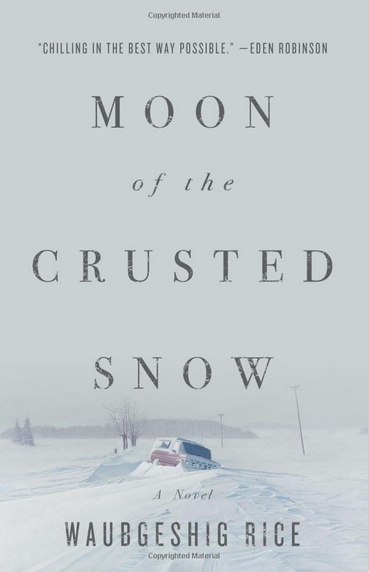A Fictional, Prescient Pandemic How-to Guide

By Waubgeshig Rice
ECW Press/2018
Reviewed by Rick Smith
December 15, 2020
I’m embarrassed to admit that I typically only read nonfiction. And, I suspect, like many of you, my pace of reading has increased substantially since March of this year. In an effort to make sense of this pandemic — and its multifarious impacts — I have ploughed through reports and books on topics as diverse as systems of income support and the job-creation benefits of carbon reduction policies. The think tank that I am privileged to work for, the Broadbent Institute, has published more research studies in 2020 than ever before.
But there is a fundamental strangeness about this period of time that all the smart reports I’ve been reading have failed to capture.
It’s that feeling on the back of my neck when, biking through the financial district in Toronto in the middle of the workday, I realize there isn’t a soul…not a soul…in sight. It’s the eerie quiet that hangs in the air when I’m lining up, single file, outside my local grocery store with twenty other people wearing masks: many of which have become increasingly eccentric fashion statements. It’s the gnawing worry I feel when I think about the social formation of my kids being stunted due to lack of contact with their fellow humans.
The best book I’ve read that reflects the pandemic’s deeper emotional impact isn’t one of the countless reports piling up on my desk, it’s Waubgeshig Rice’s 2018 novel Moon of the Crusted Snow. I was moved to pick it up and break my fiction drought when I saw Rice speak at the Broadbent Institute’s recent Progress Gala (which, this year, of course, was held online). Though he wrote it pre-pandemic, the book is so prescient that it was recently described as an unintentional COVID “how to” guide.
Set in a small, isolated Anishinaabe community in northern Ontario, the story begins after some unexplained apocalypse cuts off all communication and infrastructure, including electricity, from the south. As the winter sets in, community members like Evan Whitesky and his family gradually come to terms with their desperate new reality as they are beset by massive snowfalls, dwindling supplies and hungry interlopers.
Though some, in the book as in life, profiteer at the expense of others (I’m looking at you, Jeff Bezos), the vast majority adapt to their stressful new circumstances with kindness and bravery and even humour. If there’s one thing I’m going to remember from this pandemic period, years from now, it’s how resilient people were, and how even the most difficult moments were met with acts of kindness.
In our own crisis, as COVID vaccinations start to roll out, the question increasingly becomes how to structure a recovery that works for everybody. Like an X-ray, COVID has laid bare flaws in our social safety net that need to be addressed, ranging from lax regulation and oversight in long-term care homes to gaps in Medicare drug coverage to lack of fairness in the taxation system. How to #BuildBackBetter is the policy question du jour, and will be the focus of debates on all levels of government in 2021 and beyond. If there’s one thing that’s clear it is this: As we look to the future, we cannot repeat the mistakes of the past. At the end of Moon of the Crusted Snow we get a hint of how Rice’s heroes will build their recovery. It is through re-connecting with their ancient Anishinaabe knowledge and teachings that they are able to finally navigate the modern apocalypse.
I was sufficiently moved by this book that I DM’ed Rice on Twitter to clarify a particular plot detail, and I bought a copy for my father for his upcoming birthday. So consider this fiction-skeptic “all in.” Do yourselves a favour, yee wonkish readers of Policy Magazine: make Moon of the Crusted Snow your holiday reading. You deserve a break from the latest treatises on foreign affairs in a post-COVID, multipolar world. Plus: you’ll be all caught up when Waubgeshig Rice publishes his (God-willing, post-pandemic) sequel in 2022.
Rick Smith is the Executive Director of the Broadbent Institute and co-author of “Slow Death by Rubber Duck: How the Toxicity of Everyday Life Affects Our Health” and “Toxin Toxout: Getting Harmful Chemicals Out of Our Bodies and Our World”.
